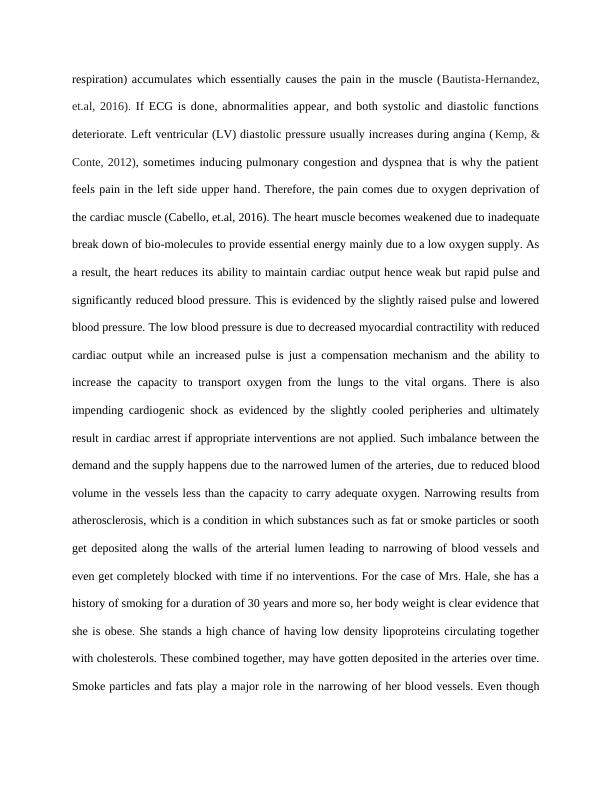Case Study of Mrs. Eleano Hale with Pneumonia and Cardiovascular Issues
Assessment on clinical case study with a length of 1800 words ±10%.
10 Pages2322 Words320 Views
Added on 2023-04-10
About This Document
This case study discusses the medical history, symptoms, and nursing interventions for Mrs. Eleano Hale, a 56-year-old female with pneumonia and cardiovascular issues. It covers her vitals, diagnosis, and priority of care. The case study also addresses her psychosocial issues and provides recommendations for her management and follow-up.
Case Study of Mrs. Eleano Hale with Pneumonia and Cardiovascular Issues
Assessment on clinical case study with a length of 1800 words ±10%.
Added on 2023-04-10
ShareRelated Documents
End of preview
Want to access all the pages? Upload your documents or become a member.
Acute Coronary Syndrome: Pathophysiology, Diagnosis, and Treatment
|11
|2532
|37
Acute Coronary Syndrome: A Case Study
|17
|4648
|83
Assignment On The Respiratory
|9
|2323
|16
Nursing Pathophysiology/Pharmacology
|9
|2253
|354
Coronary Disease and Meditation
|14
|3330
|25
Understanding Angina: Causes, Pathophysiology, and Diagnosis
|10
|3078
|342



